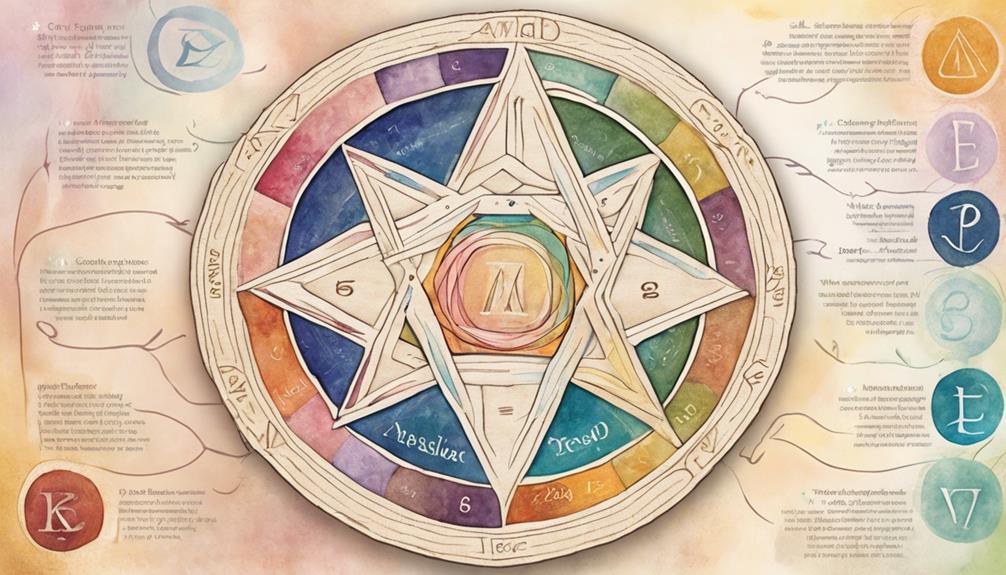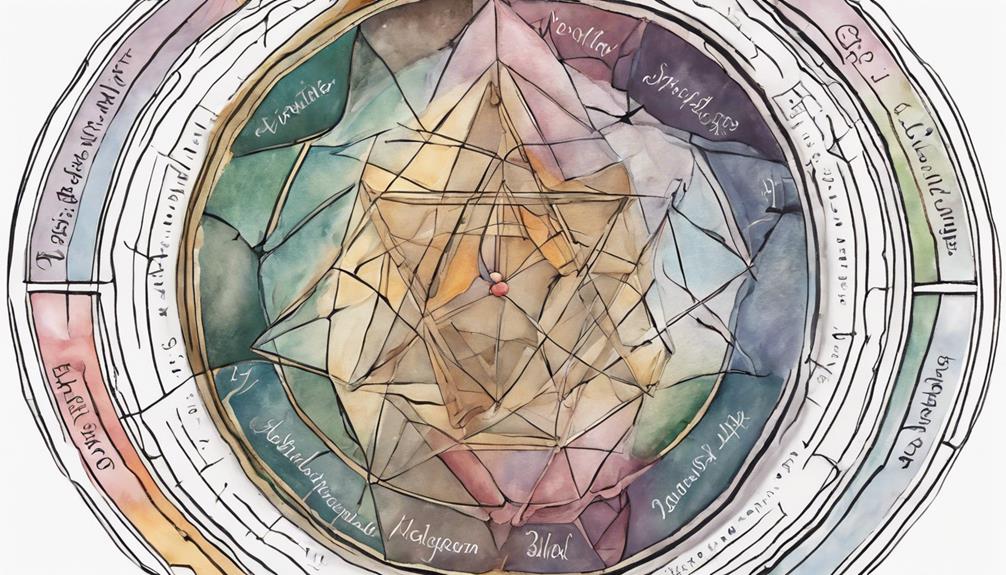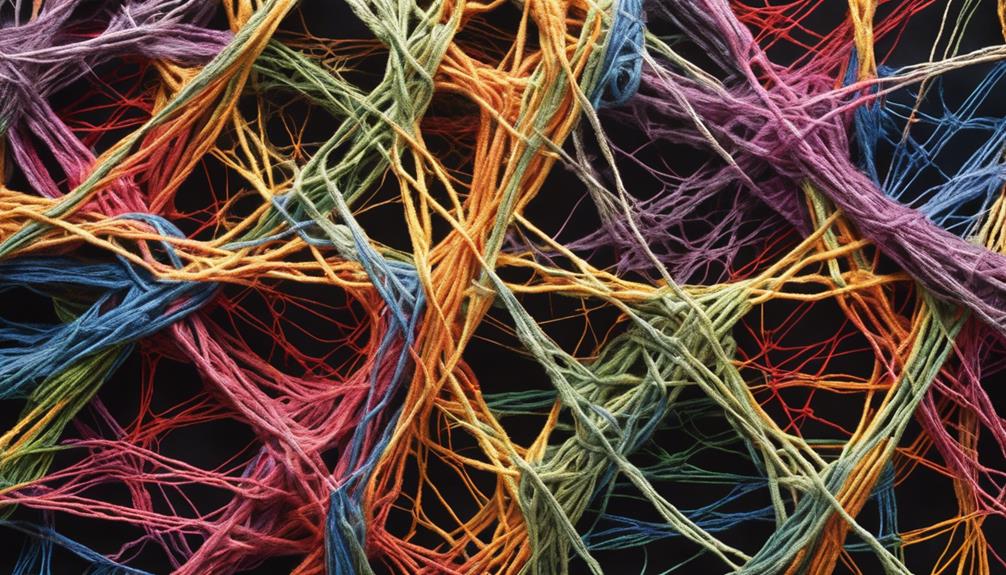Studying how Enneagram Type 2 people respond to stress is like untangling a complicated tapestry of feelings and actions. By examining the detailed methods that Helpers use to handle pressure, we reveal important insights that illuminate their coping mechanisms and interactions with others.
Understanding the nuanced nuances of Type 2 stress reactions allows us to cultivate empathy, foster healthier relationships, and enhance our own self-awareness in the process.
Key Takeaways
- Type 2s must recognize boundaries and prioritize self-care in stress.
- Identifying overfunctioning and underfunctioning behaviors is crucial for Type 2s.
- Seeking support and engaging in reflective practices aid Type 2s under stress.
- Type 2s benefit from setting boundaries, acknowledging personal needs, and seeking help.
Enneagram Type 2 Stress Triggers
When Enneagram Type 2 individuals face stress triggers, they often find themselves overwhelmed by feelings of being unappreciated or taken advantage of in their relationships. Type 2s, known for their supportive nature, can sometimes neglect their own needs in their pursuit of meeting others' expectations, leading to internal turmoil. The lack of support or acknowledgment for their continuous efforts can serve as a potent stress trigger, causing them to feel emotionally drained and undervalued.
Moreover, Enneagram Type 2 personalities thrive on building connections and offering assistance, making them particularly sensitive to situations where their acts of kindness aren't reciprocated or appreciated. In such instances, they may experience heightened levels of stress and anxiety, grappling with a sense of being unfulfilled or unacknowledged. Criticism, especially when directed at their intentions or actions, can deeply affect Type 2s, triggering feelings of inadequacy and emotional distress. Understanding these stress triggers is crucial in supporting Enneagram Type 2 individuals in navigating their relational dynamics effectively.
Coping Mechanisms for Type 2s

Navigating the complexities of stress responses, Enneagram Type 2 individuals can find empowerment and resilience through tailored coping mechanisms that prioritize self-care and emotional well-being. For Type Twos, acknowledging personal needs and engaging in emotional processing are fundamental steps in maintaining overall well-being during stressful times.
Setting boundaries is crucial; it allows Type 2s to prevent overextending themselves and feeling overwhelmed. Implementing self-care routines tailored to their needs can provide a sense of rejuvenation and inner peace. Seeking support from trusted individuals can offer valuable perspectives and emotional comfort.
Identifying stress triggers and engaging in reflective practices can aid Type Twos in understanding their reactions and developing healthier coping mechanisms. By incorporating these coping strategies into their daily lives, Type Twos can navigate stress more effectively and cultivate a stronger sense of self-awareness and emotional resilience.
Behavioral Patterns in Stress
During stressful situations, Enneagram Type 2 individuals may display distinct behavioral patterns that reflect their responses to internal and external pressures. When under stress, Type 2s often exhibit overfunctioning behaviors, feeling compelled to be everything for everyone. This can lead them to demand more from others, overthinking situations excessively, and experiencing intense emotions.
As they struggle with a lack of assistance, resentment may build up within them. These overfunctioning responses can manifest in an excessive focus on assisting others and prioritizing their own emotional processing needs.
On the other hand, underfunctioning behaviors in stress for Type 2s might involve feelings of shame for needing help and encountering deep sadness. Understanding these behavioral patterns can help Type 2 individuals recognize when they're under stress and develop healthier coping mechanisms to navigate challenging situations effectively.
Handling Stress as a Type 2

As Type 2 individuals face stress, understanding effective ways to handle and navigate these challenging situations is crucial for maintaining emotional well-being and balance. When dealing with stress, Type Twos may find themselves either underfunctioning or overfunctioning, each presenting its own set of challenges.
| Underfunctioning | Overfunctioning | Healthy Coping |
|---|---|---|
| Intense emotions and resentment for lack of assistance | Overthinking, feeling compelled to be everything for everyone, demanding more from others | Focus on personal needs and emotional processing |
| Prioritize self-care, avoid excessive assistance, refocus on setting boundaries | Seeking support, engaging in conversations with others |
Recognizing the signs of underfunctioning or overfunctioning is the first step towards managing stress effectively. By focusing on personal needs, emotional processing, self-care, and setting boundaries, Type Twos can navigate challenging situations with resilience and growth. Remember, seeking support and engaging in open conversations can also provide valuable insights and help maintain emotional balance.
Tips for Type 2s in Stress
When stressed, Type 2 individuals benefit from prioritizing self-care and setting clear boundaries to maintain emotional well-being and avoid overextending themselves. Here are some tips to help Type Twos navigate stress more effectively:
- Set Boundaries: Establish clear limits with others to prevent burnout and protect your own well-being. It's okay to say no and prioritize your needs.
- Practice Self-Care: Make time for activities that recharge you emotionally and physically. Taking care of yourself enables you to better support others.
- Seek Support: Don't hesitate to reach out to friends, family, or a therapist for help. Processing your emotions with someone you trust can alleviate feelings of overwhelm.
- Avoid Overextending: Recognize when you're taking on too much and learn to delegate tasks or ask for assistance. Remember that it's not selfish to prioritize self-care and set boundaries to prevent feelings of resentment from building up.
Frequently Asked Questions
Where Does a Type 2 Go in Stress?
When stress hits, Type 2s can exhibit traits akin to Type 8, becoming more assertive and confrontational. The pressure often stems from a deep desire to assist others in hope of gaining approval, which can lead to neglecting their own needs.
This imbalance may result in burnout and feelings of shame. By prioritizing self-awareness and setting boundaries, Type 2s can better manage stress and maintain their well-being.
How Do You Comfort an Enneagram 2?
When comforting an Enneagram 2, we show genuine appreciation for their kind acts and offer emotional support. Listening attentively without judgment creates a safe space for them to express themselves.
Encouraging self-care and setting boundaries helps prevent burnout. Reassurance and validation are key, emphasizing the importance of self-love and self-compassion.
What Trauma Causes Enneagram 2?
When exploring the trauma that can affect Enneagram Twos, it becomes apparent that experiences of feeling unappreciated, rejected, or taken advantage of can leave lasting scars. Childhood neglect, emotional unavailability, and fears of abandonment play significant roles in shaping their responses to stress.
These deep-seated wounds often manifest as self-worth issues and a persistent fear of not being loved or needed. Understanding these underlying traumas is crucial in supporting Enneagram Twos on their journey towards healing and growth.
What Triggers Enneagram Type 2?
When it comes to triggers for Enneagram Type 2, feeling unappreciated or undervalued in relationships can really hit home. Criticism, rejection, or overwhelming demands without recognition of our efforts can send us spiraling into stress.
Meeting everyone else's needs while feeling like we're not meeting our own can be a huge trigger. Conflict or disharmony in our relationships can also set off our stress responses. It's a delicate balance we navigate daily.
Conclusion
As Type Twos, we must remember that just like a tree needs both sunlight and rain to thrive, we too require a balance of giving and receiving support. By acknowledging our stress triggers, setting boundaries, and communicating our needs openly, we can navigate challenges with grace and compassion.
Let's embrace our role as Helpers while also prioritizing our own well-being, like a delicate dance between nurturing others and nurturing ourselves.
Felicity, our Author, pens in-depth articles and guides that delve into the heart of personal discovery. Her narrative-driven approach weaves together theory, practice, and personal anecdotes, making the journey of self-exploration both relatable and inspiring. Felicity’s contributions help illuminate the path for those seeking a deeper understanding of themselves and their relationships.










